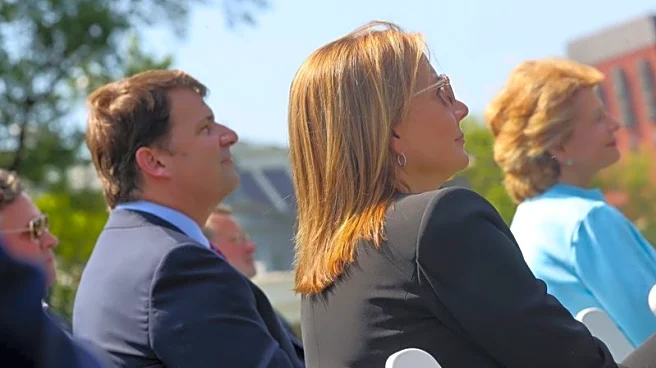What's Happening?
Public-sector procurement reform is gaining momentum across the United States, with a focus on aligning procurement processes with policy goals and delivering better outcomes at scale. The reform efforts
are driven by the need to address budget constraints, shifting priorities, and operational feedback loops. The key lesson is to make trade-offs transparently and deliberately, with a full understanding of their downstream impacts. Examples from California demonstrate how procurement approaches can vary based on the type of good or service being purchased and the policy goals in play. For instance, cost was the driving factor in the Pharmaceutical Collaborative, while functionality was prioritized in the WIC IT System procurement. Policy alignment was emphasized in fleet procurement to support clean energy goals, and speed was prioritized during the pandemic for PPE purchasing.
Why It's Important?
Procurement reform is crucial for ensuring that public-sector spending aligns with broader policy objectives, such as climate goals, economic inclusion, and transparency. By prioritizing different goals based on the context, governments can achieve more efficient and effective procurement processes. This is particularly important for large-scale IT projects, which are inherently high-risk and high-cost. Successful procurement reform can lead to significant cost savings, improved service delivery, and enhanced public trust. It also supports economic inclusion by encouraging small business and Disabled Veteran Business Enterprise (DVBE) participation. As governments embrace procurement reform, they can better manage trade-offs and achieve the best outcomes for the public.
What's Next?
As procurement reform continues to gain traction, governments are expected to involve a broader range of stakeholders in the process, including end users, funders, and policy leaders. This collaborative approach will help ensure that procurement strategies are aligned with real-world needs and policy goals. Additionally, there may be increased efforts to modernize procurement systems and processes, leveraging technology to improve efficiency and transparency. Governments may also explore new procurement models and frameworks to better manage trade-offs and achieve desired outcomes. The success of these reform efforts will depend on clear communication, stakeholder engagement, and a commitment to continuous improvement.
Beyond the Headlines
The push for procurement reform highlights the need for a cultural shift within public-sector organizations, where procurement is seen not just as a transactional process but as a strategic tool for achieving policy goals. This shift requires a change in mindset and the development of new skills and capabilities among procurement professionals. It also raises questions about the balance between cost, quality, and policy alignment, and how to navigate these trade-offs in a transparent and accountable manner. As procurement reform progresses, it may lead to broader changes in public-sector governance and accountability, with implications for how governments interact with vendors and stakeholders.














